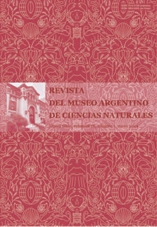Associations of ostracods in shallow lakes in the northeast of La Pampa province (Argentina)
Resumen
Shallow lakes are common in the center of Argentina. Although many characteristics of its biota are known, information on the distribution and ecology of ostracods is scarce despite their importance as biological indicators and in actuopaleontology. The objective of this study was to determine the taxonomic composition, the density of ostracods, and their relationships with environmental parameters in lakes in the northeast of La Pampa. Five aquatic ecosystems were studied from September 2016 to March 2017. Samples of superficial sediments were collected, and conductivity, temperature, and transparency were measured in situ. Water samples were collected to determine salinity, pH, and ionic composition. The lakes differed in salinity, ionic composition, and transparency. Ten taxa were registered, some previously found in the province of Buenos Aires (Heterocypris similis, Heterocypris incongruens, Cypridopsis vidua, and Chlamydotheca incisa), the Llancanelo basin (H. incongruens and C. vidua), and North Patagonia lakes (C. incisa, C. vidua, Potamocypris unicaudata, H. incongruens, and Amphicypris argentiniensis). The influence of salinity was verified because some species (A. argentinensis, Limnocythere rionegroensis, and Limnocythere titicaca) were found only in the most saline lake. The existence in La Pampa of three different ecoregions (Pampean Plains, Espinal, and Patagonian Steppe) and the presence of ostracods in the studied lakes of northwestern Argentina (L. titicaca), the Buenos Aires province plain (H. similis, H. incongruens), and Patagonia (L. rionegroensis) allowed for affirming that the lakes of La Pampa are in a transition zone among different ostracods faunas.
Palabras clave
Texto completo:
PDF (English)Enlaces refback
- No hay ningún enlace refback.

This work is licensed under a Creative Commons Attribution 3.0 License.

